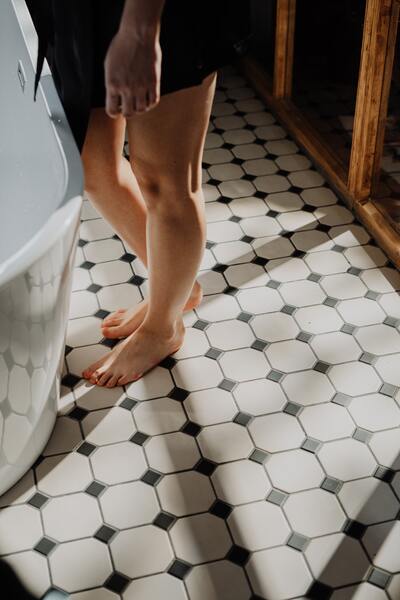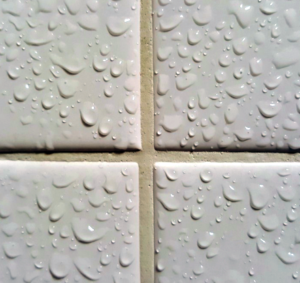
Tile flooring is a popular choice for high-traffic areas like kitchens, foyers, and hallways because it’s durable and easy to maintain. However, when it comes to tile and grout care, the grout between the tiles often needs extra attention. Everyday dirt and grime can cause grout to discolor or stain, especially in areas like kitchens and bathrooms where moisture can lead to mold and mildew. With a consistent cleaning routine and the right products, you can keep your tile and grout looking fresh and clean.
Understanding Your Tile
 Ceramic Tile
Ceramic Tile
Ceramic tile is made from clay and other natural materials. It’s easy to install and maintain, making it a popular choice for kitchens, bathrooms, and entryways. Available in a variety of styles and colors, ceramic tile is both versatile and durable. Its long lifespan and resistance to scratches make it an ideal option for high-traffic areas.
Pro Tip: Terra cotta is a type of ceramic tile that can be either glazed or unglazed. While unglazed tiles offer a more artistic, rustic look, glazed tiles provide additional protection for a longer-lasting floor.
Porcelain Tile
Porcelain tile is a type of ceramic, but it’s made from denser clay and fired at higher temperatures, making it less porous and more resistant to stains. Porcelain can mimic the look of natural stone, wood, or brick, but without the high maintenance. Its durability and versatility make it a great option for kitchens, bathrooms, and high-traffic areas like hallways and foyers.
Understanding Your Grout
 Portland Cement-Based Grout
Portland Cement-Based Grout
Sanded grout, made from Portland cement and sand, is commonly used with ceramic and stone tiles. It’s absorbent, so sealing it is essential to protect it from stains. Non-sanded grout, which is typically used with materials like polished marble, includes fine fillers and water-retentive additives.
Epoxy Resin Grout
Epoxy grout is stain- and mildew-resistant, making it an excellent choice for areas like kitchen countertops and bathrooms. Its low absorbency and ease of cleaning make it a preferred option for spaces exposed to moisture.
Furan Grout
Used mostly in industrial settings, furan grout is highly chemical resistant but is rarely seen in residential homes.
Caulking
Caulking, made primarily of silicone, is flexible and can stretch without cracking, making it ideal for areas where tile meets other surfaces, like between a sink and countertop. It’s also highly resistant to weather and temperature changes.
Best Practices for Tile and Grout Care

Tile Countertops
Avoid using general cleaners not formulated for tile and grout, as they can break down the protective sealers. Clean with approved products and use a soft cloth to prevent streaks or scratches. Never use abrasive powders or brushes, as they can damage the surface of your tile.
Tile Floors
Regular dust-mopping or vacuuming will help prevent grit and dirt from scratching your tile. Use rugs or mats at entryways to catch debris before it reaches your tile floors. Always use cleaners designed for tile floors and avoid harsh abrasives.
Bathrooms and Wet Areas
Prevent soap scum by using a squeegee after each shower and ensuring the bathroom is well-ventilated. For tough stains, use a non-acidic cleaner or a solution of ammonia and water. Be careful with overuse of ammonia, as it can dull tile surfaces over time.
Seal For Success
Grout is porous and can trap dirt and bacteria, which makes sealing it a must. Sealing grout protects it from stains and helps keep your home clean and healthy. High-traffic areas should be sealed annually, while low-traffic areas may only need resealing every 4-5 years.
Types of Grout Sealers:
- Coating Sealers: These form a protective layer on the surface of the grout, blocking stains. They come in permanent and strippable options.
- Color Sealers: These sealers fill the grout pores while allowing you to change the color of the grout.
- Penetrating Sealers: These penetrate the grout to prevent dirt and water from seeping in, reducing the risk of stains and bacterial growth.
